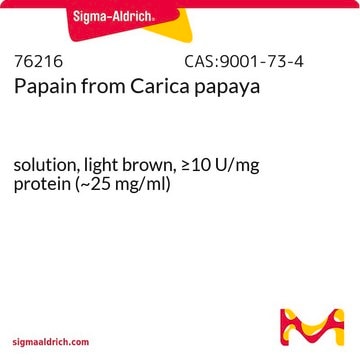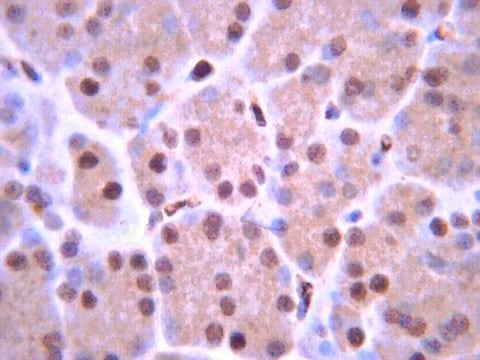5125
CDH13 human
recombinant, expressed in E. coli, 0.5 mg protein/mL
About This Item
Prodotti consigliati
Origine biologica
human
Ricombinante
expressed in E. coli
Descrizione
0.1 mg recombinant human CDH13 in 20 mM Tris-HCl buffer containing NaCl, KCl, EDTA, L-arginine, DTT and glycerol.
Sterilità
Filtered sterilized solution
Saggio
≥90% (SDS-PAGE)
Forma fisica
liquid
Confezionamento
pkg of 100 μg
Concentrazione
0.5 mg protein/mL
tecniche
cell culture | mammalian: suitable
Numero d’accesso
NP_001248
Condizioni di spedizione
dry ice
Temperatura di conservazione
−20°C
Informazioni sul gene
human ... CDH13(1012)
Applicazioni
Use this procedure as a guideline to determine optimal coating conditions for the culture system of choice.
1. Thaw CDH13 and dilute to desired concentration using serum-free medium or PBS. The final solution should be sufficiently dilute so that the volume added covers the surface evenly (1-10 μg/well, 6 well plate).
2. Add appropriate amount of diluted material to culture surface.
3. Incubate at room temperature for approximately 1.5 hours.
4. Aspirate remaining material.
5. Rinse plates carefully with water and avoid scratching bottom surface of plates.
6. Plates are ready for use. They may also be stored at 2-8 °C damp or air dried if sterility is maintained.
Sequenza
Nota sulla preparazione
Codice della classe di stoccaggio
10 - Combustible liquids
Classe di pericolosità dell'acqua (WGK)
WGK 2
Punto d’infiammabilità (°F)
Not applicable
Punto d’infiammabilità (°C)
Not applicable
Certificati d'analisi (COA)
Cerca il Certificati d'analisi (COA) digitando il numero di lotto/batch corrispondente. I numeri di lotto o di batch sono stampati sull'etichetta dei prodotti dopo la parola ‘Lotto’ o ‘Batch’.
Possiedi già questo prodotto?
I documenti relativi ai prodotti acquistati recentemente sono disponibili nell’Archivio dei documenti.
Il team dei nostri ricercatori vanta grande esperienza in tutte le aree della ricerca quali Life Science, scienza dei materiali, sintesi chimica, cromatografia, discipline analitiche, ecc..
Contatta l'Assistenza Tecnica.







